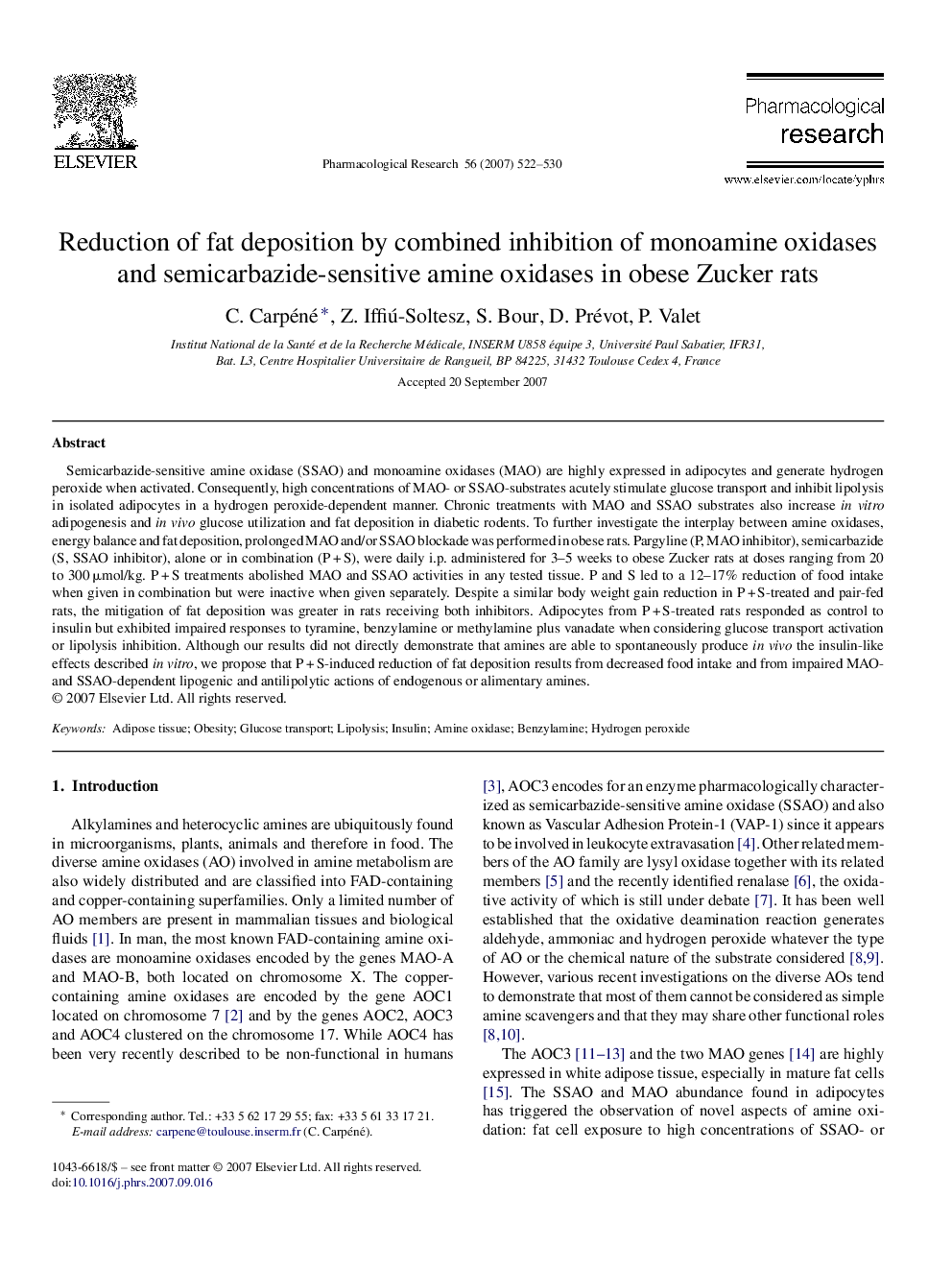| Article ID | Journal | Published Year | Pages | File Type |
|---|---|---|---|---|
| 2562397 | Pharmacological Research | 2007 | 9 Pages |
Semicarbazide-sensitive amine oxidase (SSAO) and monoamine oxidases (MAO) are highly expressed in adipocytes and generate hydrogen peroxide when activated. Consequently, high concentrations of MAO- or SSAO-substrates acutely stimulate glucose transport and inhibit lipolysis in isolated adipocytes in a hydrogen peroxide-dependent manner. Chronic treatments with MAO and SSAO substrates also increase in vitro adipogenesis and in vivo glucose utilization and fat deposition in diabetic rodents. To further investigate the interplay between amine oxidases, energy balance and fat deposition, prolonged MAO and/or SSAO blockade was performed in obese rats. Pargyline (P, MAO inhibitor), semicarbazide (S, SSAO inhibitor), alone or in combination (P + S), were daily i.p. administered for 3–5 weeks to obese Zucker rats at doses ranging from 20 to 300 μmol/kg. P + S treatments abolished MAO and SSAO activities in any tested tissue. P and S led to a 12–17% reduction of food intake when given in combination but were inactive when given separately. Despite a similar body weight gain reduction in P + S-treated and pair-fed rats, the mitigation of fat deposition was greater in rats receiving both inhibitors. Adipocytes from P + S-treated rats responded as control to insulin but exhibited impaired responses to tyramine, benzylamine or methylamine plus vanadate when considering glucose transport activation or lipolysis inhibition. Although our results did not directly demonstrate that amines are able to spontaneously produce in vivo the insulin-like effects described in vitro, we propose that P + S-induced reduction of fat deposition results from decreased food intake and from impaired MAO- and SSAO-dependent lipogenic and antilipolytic actions of endogenous or alimentary amines.
